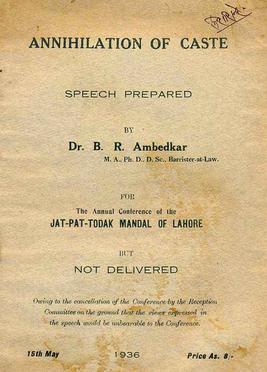Sthabir Khora
 There is a saying that goes: ‘mastery is mastery of the basics’. The Supreme Court judgement on Atrocities Act (Subhash Kashinath Mahajan v The State of Maharashtra, 2018) reminds one of this particular saying. The adage ‘mastery is mastery of the basics’ is applicable to all disciplines including statistics and jurisprudence. This judgment was an interaction between statistics and jurisprudence.
There is a saying that goes: ‘mastery is mastery of the basics’. The Supreme Court judgement on Atrocities Act (Subhash Kashinath Mahajan v The State of Maharashtra, 2018) reminds one of this particular saying. The adage ‘mastery is mastery of the basics’ is applicable to all disciplines including statistics and jurisprudence. This judgment was an interaction between statistics and jurisprudence.
When an exercise involves the interaction between statistics and jurisprudence then the basics involved in both disciplines have to be taken into account. I will point out the basics of statistics and jurisprudence that are missed in this judgement.
Basic 1 – In statistics only comparables can be compared with
One cannot compare an apple with a cabbage. Similarly one cannot compare statistics belonging to one phenomenon with that of another. There are a couple of statistics related to the various stages in the justice process. For each stage, there is a comparable alternate stage and the statistics of both can be compared with.
One can see that statistics pertaining to one stage of the justice process cannot be compared to statistics pertaining to another/next stage because one stage is very different from another/next stage. The level of scrutiny increases as we move from FIR to conviction/acquittal. Therefore it is far-fetched to club a final report (false cases) with acquittal rate. If one assumes a false case on the basis of a final report, then can one assume a true case on the basis of a chargesheet! If presumption of innocence holds at the stage of chargesheet then it holds equally well at the final report stage because both belong to a pre-trial mutually alternate stage.
Basic 2 – You cannot rely on a statistics where just one case contributes more than 50% of the total value
It is one state, Rajasthan, that is predominantly responsible for the false cases if we see ‘Crime in India 2016’ published by National Crime Records Bureau (http://ncrb.gov.in/StatPublications/CII/CII2016/pdfs/NEWPDFs/Crime%20in%20India%20-%202016%20Complete%20PDF%20291117.pdf).
(1-Scheduled Caste and Scheduled Tribe (Prevention of Atrocities) Act, 1989; 2-Protection of Civil Rights Act 1955)
As Table 2 shows, if Rajasthan contributes about 52% of the total false cases, then the obvious analysis is that the issue of false case is basically a Rajasthan issue and not an all India issue. Here the basic the court missed is the query: why the rate of false cases is so high in Rajasthan and not so in nearby Uttar Pradesh?
Basic 3 – Statistics that do not reflect the phenomenon are not valid
These days sometimes the children have more expensive cell phones than their parents. This doesn’t mean they have more money than their parents. Therefore measuring people’s financial worth by looking solely at their smart phones is not valid. The research proposals of MA students in social sciences customarily have a small section on issues of reliability and validity. Validity is about whether something is the right measurement device for the phenomenon under question; for example you cannot measure temperature in meters or feet but in Centigrade or Fahrenheit. The issue before the court was the magnitude of false cases. What are the correct statistics to represent this? The valid statistics would have been the conviction rate under section 182 IPC for false cases for invoking Atrocities Act. The court relying on the acquittal rate instead of conviction rate under 182 IPC has totally missed the point.
Basic 4 – In common law “It is better that ten guilty persons escape than that one innocent suffer”
While the court has quoted one of the basic principles of common law – presumption of innocence- it forgot another basic principle enunciated by Blackstone, “It is better that ten guilty persons escape than that one innocent suffer”. If we accept this literally, then we have to be satisfied with a conviction rate of slightly less than 10%. The correct interpretation of low conviction and high acquittal rate is that many guilty are still escaping without being convicted because of benefit of doubt given to them and burden of proof placed on the accuser rather than the accused. This flows from a basic understanding of common law jurisprudence. If one remembers this principle then one cannot pass any comment on SC/ST lodging false cases on the basis of high acquittal rate.
~~~
Dr Sthabir Khora is Associate Professor in the School of Education, Tata Institute of Social Sciences. His book “Education and Teacher Professionalism” (2011, Jaipur: Rawat Publications) is recommended reading in the M.Ed Syllabus of Punjabi University, Patiala.









